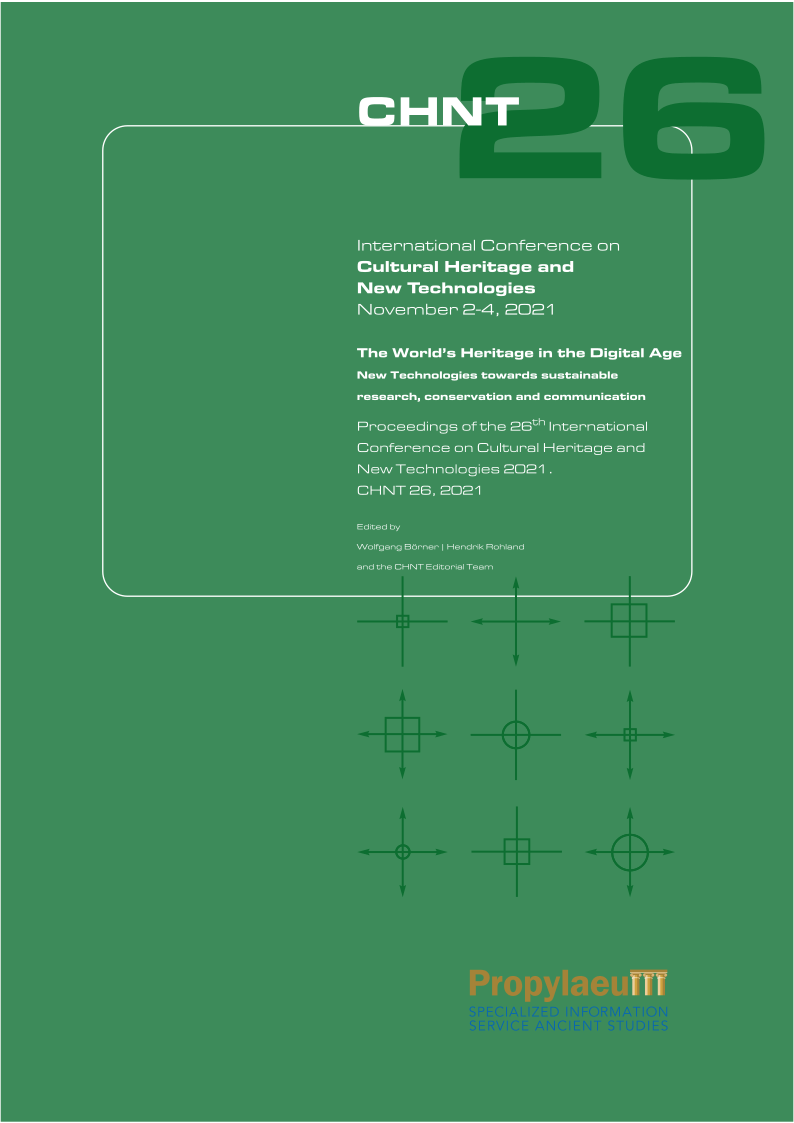Sonar Mapping and Sampling of Underwater Archaeological Excavations
Case-Study application at the Oberwartha reservoir in Saxony/Germany
Keywords:
Semi-autonomous UUV, sample collection, Orientation with sonar, self-localization, UTM coordinatesAbstract
The authors present a system for underwater 3D mapping and excavation by combining a semi-autonomous mini-submarine with a radio buoy. The system is designed for archaeological documentation where reliable underwater georeferencing is a major challenge. The buoy provides communication and sensor data to the base station, while the mini-submarine carries a ping sonar and videogrammetry equipment for 3D reconstruction. To perform a semi-autonomous dive, a fixed cable length must be selected between the submarine and the buoy, and the dive depth must be set. Therefore, a rough map of available dive depths is crucial to better specify the dive. The authors used a small sonar called Deeper to locate individual measuring points in the water depth and obtain a rough map of the water body. With this information, the authors were able to determine the number and angles of the cameras to be placed on the submarine and adjust the cable length accordingly. The cameras were then used to record the structure of the bottom of the water body and the images were processed using ORB-SLAM3 for real-time 3D reconstruction.The results showed that the system was successful in obtaining 3D maps of the underwater structures and sampling locations. The system was able to provide reliable and accurate depth measurements, allowing the authors to plan the dive in advance and avoid potential difficulties. In addition, the authors found that the system was able to operate effectively in deep water as long as sufficient light was available. Overall, the authors concluded that the semi-autonomous system for underwater 3D mapping and excavation is a promising approach that could be used in other underwater applications. The authors also suggested that future work could focus on improving the accuracy and reliability of the system, as well as integrating additional sensors and algorithms to improve performance.
References
Balletti, C.; Beltrame, C.; Costa, E.; Guerra, F., and Vernier, P. (2015): Underwater Photogrammetry and 3D Reconstruction of Marble Cargos Shipwreck. The International Archives of the Photogrammetry, Remote Sensing and Spatial Information Sciences, Volume XL-5/W5, 2015 Underwater 3D Recording and Modeling.
Block M., Gehmlich B., Bommhardt-Richter M., Bochmann H. (2018): "Archaeological underwater documentations with Manio", Abstract, Poster presentation, Congress Visual Heritage, 23rd Conference on Cultural Heritage and New Technologies (CHNT 23) in Vienna/Austria
Block M., Bommhardt M., Gehmlich B., Wittchen D., Burggraf D., Zeisberg S., Görsch N., Gunnarsson K., Bochmann H., Haferland A. (2018): „Mini-U-Boot Manio: Echtzeitbasierte, semi-autonome Unterwasser-dokumentationen“, Technical Report, TR DD-2018-01, FIITS, HTW Dresden, Germany
Block M., Dworsky C., Löw C., Gehmlich B., Wittchen D., Görsch N., Suchowska P., Ducke B. (2017): „Underwater Videogrammetry with Adaptive Feature Detection at ’See am Mondsee’, Austria", In: Journal of Studies in Digital Heritage, Indiana University, Vol. 1, No. 2, pp. 547-565
Block M., Gehmlich B., Bommhardt-Richter M., Bochmann H. (2018): „Archaeological underwater documentations with Manio“, Congress Visual Heritage, 23rd Conference on Cultural Heritage and New Technologies (CHNT 23) in Vienna/Austria
Block M., Gehmlich B., Bommhardt-Richter M., Görsch N., Bochmann H., Haferland A., Gunnarsson K., Löw C., Dworsky C. (2018): „Using Aerial Documentation for Underwater Georeferencing at UNESCO Pile Dwellings "See am Mondsee" in Austria“, Abstract, Oral presentation, Congress Visual Heritage, 23th Conference on Cultural Heritage and New Technologies (CHNT 23) in Vienna/Austria
Block M., Gehmlich B., Hettmanczyk D. (2017): „Automatic Underwater Image Enhancement using Improved Dark Channel Prior“, In: Journal of Studies in Digital Heritage, Indiana University, Vol. 1, No. 2, pp. 566-589
Block M., Rojas R., Oczipka M., Suchowska-Ducke P., Gehmlich B., Wittchen D., Görsch N., Kmoch M., Schiemank T., Coburger C. (2015): "Archaeocopter: Towards Best Practice in Videogrammetry", 20th Conference on Cultural Heritage and New Technologies (CHNT 20) in Vienna/Austria
Bommhardt-Richter M., Bochmann H., Block M. (2020): ‘Cousteau-II: A semi-autonomous underwater recording system for long-term recording’, 25th Conference on Cultural Heritage and New Technologies (CHNT 25) in Vienna/Austria, Abstract
Campos C., Elvira R., Rodríguez J. J. G., Montiel J. M. M., Tardós J. D. (2020): „ORB-SLAM3: An Accurate Open-Source Library for Visual, Visual-Inertial and Multi-Map SLAM“, arXiv preprint ar-Xiv:2007.11898
Papadimitriou, K. (2015): Course Outline for a Scuba Diving Speciality „Underwater Survey Diver“. The International archives of the Photogrammetry, Remote Sensing and Spatial Information Sciences, Volume XL-5/W5, 2015 Underwater 3D Recording and Modeling
Downloads
Published
Conference Proceedings Volume
Section
License
Copyright (c) 2025 Michael Bommhardt-Richter, Block-Berlitz Marco

This work is licensed under a Creative Commons Attribution-ShareAlike 4.0 International License.
The CHNT older Proceedings are licensed under the creative commons license CC BY-NC-ND 3.0.
From the issue 26 on, they will be licensed under the creative commons license CC-BY-SA 4.0


